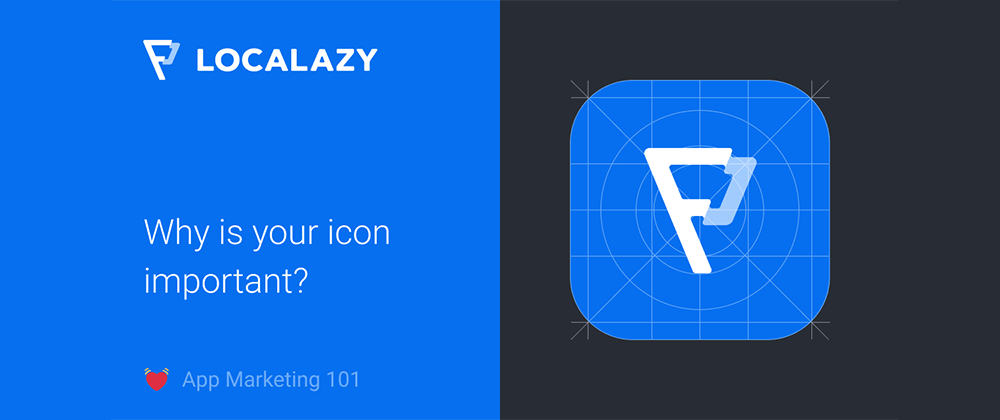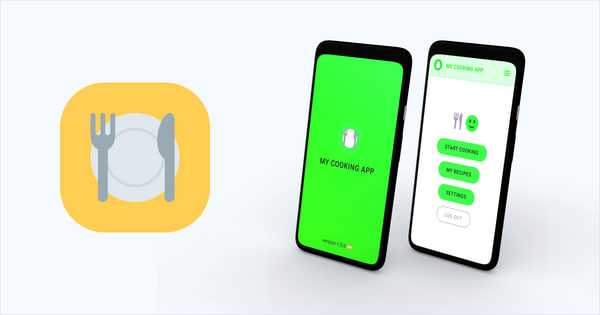🤔 Why is your icon important?
Your app's icon is the first thing your potential users see and it is an important part of App Store Optimization and can impact the success of your monetization efforts. Whether they get to your app on Google Play, Huawei AppGallery, Amazon AppStore, or any other store/site, the most prominent is always the icon.
Users use it to ensure that your app is really what they are looking for when referred from other sources. They are instinctively looking for a familiar symbol.
In search, the app icon is the first to attract users' interest. Imagine that you search for, e.g., note-taking apps, and there are plenty of them.
Which one are you more likely to click on to see details?
Your eyes preselect apps by their icon. Also, the icon is a small but extremely important advertisement. You can use it to communicate with users that find your app by accident. We'll talk about it later.
📐 Design is important
Your icon should be simple, clean, modern, and easily recognizable. Avoid using photos or too complex icons with too many colors and text. Avoid using texts in icons (there are some exceptions, and we will talk about them later).
Avoid icons that don't have a proper aspect ratio, are blurred, or otherwise imperfect. Your app's icon communicates your approach. Do you care about details or not? Are you doing your best? Do you invest time to do things properly? What do you want users to know about you from the first sight of your icon?
Your app's icon should be related to its purpose. It should communicate what users can expect from your app and what it will help them with. When looking for a note-taking app, you are more inclined to click on the one with a notepad, paper, pencil, etc. But you probably avoid the one with flowers unless it's a familiar and established brand.
However, with respect to the previous paragraph, you don't want your app icon to be the same as thousand others! Search for similar apps, do your research, come with ideas, verify that they are unique enough but still familiar. Don't be afraid of symbolism, but don't overthink it.
Don't use icons from ready-made sets such as those used in the operating system as-is. Others are likely to do the same, and you lose your uniqueness. However, ready-made sets are a great source of inspiration for communicating the purpose of your app through the icon.
There are some exceptions to this chapter - e.g., games often use very complex icons full of colors. It depends on the target audience and its preferences. Don't follow our advice blindly, and do your research.
🕹️ Icon is a part of UX
Your app's icon is NOT an isolated image. It's a part of your app, it should use the same colors, and it should be a model for other icons inside your app, such as those in the menu, etc.
Think about it when designing the icon, so you are sure that you can use its colors across your apps both for light and dark themes and that its colors are not going to hurt your users' eyes if the icons are used in the toolbar.
Even small things like a completely different color of the icon and colors of your app on the screenshots shown in the store may affect your users' decision-making process.
Also, if everything nicely fits together and your users' experience is seamless, they are more likely to give you a better rating/review, thus affecting your app's success in the long run. A considerable part of reviews for my apps mentioned design as a critical issue/benefit.
🛍️ App vs. Store icon
I have a slightly different icon in stores - as described in the next chapter, I hesitate to change it radically. The app icon is less of marketing material, and you can experiment with it. I use a similar icon but more modernized and often adapted for its purpose - e.g., you can have a slightly different icon for the free and full version.
Also, it's a good practice to make the icon simpler and cleaner for the app, so it stays beautiful even on low-res screens. A beautiful and clean icon is also better for ads. You can, e.g., use a smooth gradient on the store and solid color for the app.
However, keep in mind that users shouldn't be confused, and they should be able to find the installed app by a similar icon. Also, respect all the things like rounded corners, shadows, etc. Even such a small thing affects the overall user experience and can earn you better ratings/reviews, and those are extremely important for your success.
Platform specific use
Keep in mind that each operating system, manufacturer, and app marketplace might have different requirements and different ways to display your icon. On top of that consider various proprietary Android ROMs and Launchers...
- Read the official Google Play icon design specifications.
And, for example, iOS always applies rounded corners to your design; some systems don't allow alpha channel (transparency) in your icon, etc.
- Read the official Apple AppStore App Icon guidelines
Your icon should be universal enough to look good on most platforms and outlets.
🤲 Invest early and be careful with updates
If you plan your app to be a new big thing or see traction for your existing app, go and get an excellent icon for it. It's a long-term investment. My app has the same icon for years.
I have slightly modernized it, but it's a bit obsolete as of now. A few years ago, I changed it to an entirely new and modern one. Downloads and sales dropped immediately.
Why? Because it was no longer recognizable for potential users. There were already tons of posts on social media, blogs, YouTube, etc., with my old icon. Also, other apps, trying to get a part of my users, use a similar name, making it even harder for potential users to find the correct one.
The icon and the #1 position on Google Play for specific keywords were a no-brainer for my app. Click, install, and go. And the user can be sure that they get the app they wanted. If you need to change the icon for a successful app, iterate it in small steps. Make it better over time, but keep the relation with the previous version.
🖌️ DIY or hire a professional?
If you are not a designer at heart or don't want to design the icon on your own, hire a professional. If your budget is tight, you can try gig marketplaces like Fiverr and others. Go through designers' profiles to get a feel for their style and choose someone you like.
Be thorough with your proposal and express your expectations to avoid countless iterations of the designs. Ideally, share this article with the designer. Even the most excellent and most talented designers might need a refresher or a slight nudge in the right direction.
🤫 Steal the icon?
I rarely see this happen for better apps, but as described in the Invest early chapter, you can mimic the icon of more successful apps to get recognizable for potential users.
Even if they are not satisfied with the original app, they are more inclined to try another app with a familiar name/icon. I don't recommend doing it because you are losing your own identity, and you are likely to stay at the tail forever.
🏷️ Icon as advertisement
Use your app's icon for communication with your users. There are two general approaches how to do it:
Additional information seamlessly integrated with the icon
You can use very short words such as "FREE" to highlight the given app as a free version. It attracts a bit more attention. However, it has to be seamlessly designed, so it's not going to break the user experience. This is a nice trick if you have more versions such as FREE/FULL, etc.
Icon-breaking announcement
From time to time, you can communicate discounted actions. I regularly run discounts for, e.g., Black Fridays & Cyber Mondays. I have a different version of the store icon with a red ribbon over one corner for this special occasion, highlighting a 70% discount.
It makes the app even more visible and attracts users searching the store for discounts and sales. It can temporarily "break" the design of the icon to make an announcement.
Pay attention to the guidelines and rules of the marketplace you are targeting. E.g., Google Play recommends avoiding using badges and ribbons in icons.
✔️ Closing words
Don't expect that a different icon will increase your revenue tenfold, but it's an important step on your way to a successful app. My recommendations are based on my own experience with many different apps, but your particular app may need a bit different approach. Use my advice as a guideline for your own strategy.
📚 Further reading
⭐ True Continuous Localization
What does True Continuous Localization really mean? Dive deeper and learn how true continuous localization with Localazy covers all of the many steps involved in localization management, with a single service - 🚀 Localazy® Autopilot.
⭐ Interview: How Floating Apps achieved millions of downloads
In this interview, the founder and CEO of Localazy, Václav Hodek, shares his past experience as a freelance developer, the reasons that led him to the founding of a new translation management platform, and how Localazy helped his project enter new markets and hit over 10 million downloads!
⭐ Before you invest in app promotion, invest in app localization
Learn why you should localize your app before you start burning money on app promotion in foreign markets.















Top comments (0)